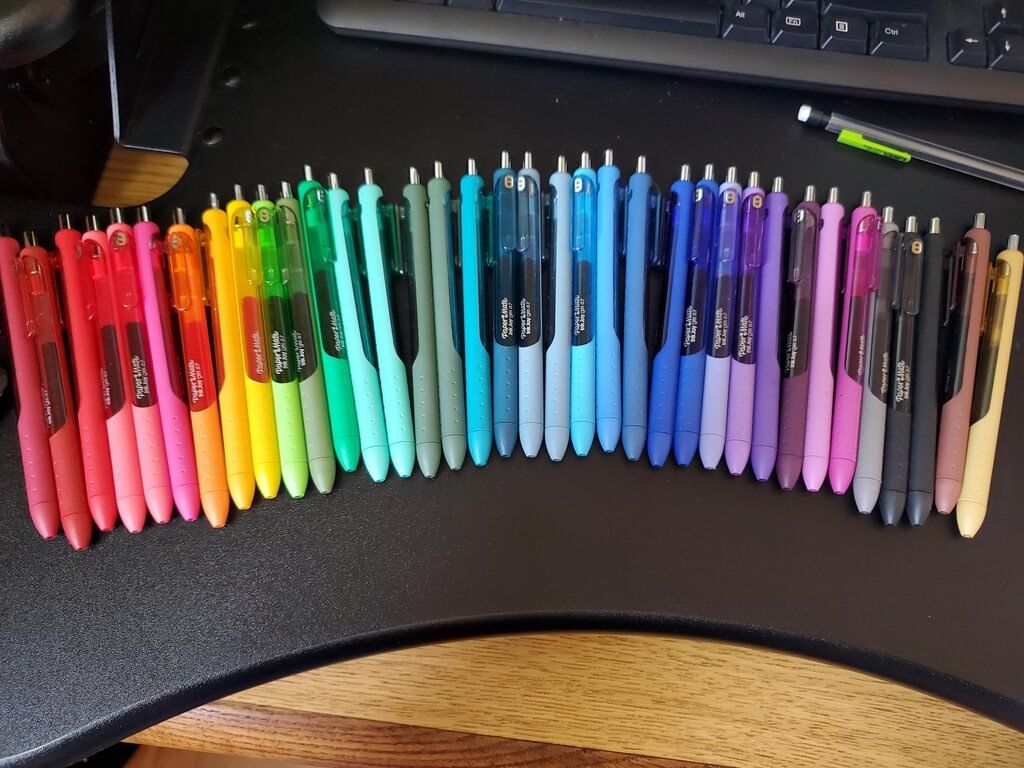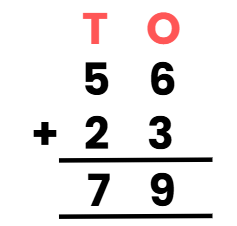Everyday Mathematics: Numbers | Mathematics Olympiad for Class 1 PDF Download
Q1. A shopkeeper had 56 pens in stock and added 23 more pens. What is the total number of pens now?
(a) 79
(b) 73
(c) 69
(d) 33
Ans: (a) 79
Q2. A boy saved 4 tens and 8 ones in his piggy bank last month and 5 tens and 2 ones this month. Which amount is greater?
(a) 48
(b) 52
(c) Both are equal
(d) Cannot be determined
Ans: (b) 52
4 tens + 8 ones = 40 + 8 = 48
5 tens + 2 ones = 50 + 2 = 52.
Compare: 48 < 52.
So, 52 is greater.
Q3. The number of students in a school increased from 78 to 92 over a year. Which number is greater?
(a) 78
(b) 92
(c) Both are equal
(d) Cannot be determined
Ans: (b) 92
Compare the digits:
78 has 7 tens and 8 ones
92 has 9 tens and 2 ones.
Since 9 tens > 7 tens
Therefore, 92 > 78.
Q4. A fruit seller arranged his apples in descending order: 85, 76, 67, 58. What is the next number in the sequence?
(a) 49
(b) 57
(c) 48
(d) 59
Ans: (a) 49
Descending order means largest to smallest.
The pattern decreases by 9 each time: 85 - 9 = 76,
76 - 9 = 67,
67 - 9 = 58,
58 - 9 = 49.
So, the next number is 49.
Q5. A girl skip counts by 5s to count her candies: 5, 10, 15, 20, 25. How many candies does she have?
(a) 20
(b) 25
(c) 15
(d) 30
Ans: (b) 25
Skip counting by 5s:
The last number is 25, which represents the total number of candies.
Q6. A bus ticket costs 6 tens and 3 ones. What is the cost of the ticket?
(a) 36
(b) 63
(c) 60
(d) 33
Ans: (b) 63
6 tens = 60, 3 ones = 3.
Total = 60 + 3 = 63.
So, the ticket costs 63 rupees.
Q7. A store sold 87 notebooks on Monday and 78 on Tuesday. Which day had more sales?
(a) Monday
(b) Tuesday
(c) Both are equal
(d) Cannot be determined
Ans: (a) Monday
87 has 8 tens and 7 ones,
78 has 7 tens and 8 ones.
Since 8 tens > 7 tens
87 > 78.
So, Monday had more sales.
Q8. A boy wrote a two-digit number with 7 in the ones place and a value less than 47. What could the number be?
(a) 17
(b) 47
(c) 57
(d) 27
Ans: (a) 17
The ones digit is 7, and the number must be less than 47.
Check:
17 < 47,
47 = 47,
57 > 47,
27 < 47.
Among the options, 17 is the smallest.
Q9. A girl arranged her toys in ascending order: 34, 45, 67, 89. What was the smallest number of toys she started with?
(a) 34
(b) 45
(c) 67
(d) 89
Ans: (a) 34
Ascending order means smallest to largest.
The sequence is 34, 45, 67, 89.
The smallest number is the first one, 34.
Q10. A farmer packed 7 tens and 4 ones of oranges in a crate. How many oranges are in the crate?
(a) 47
(b) 74
(c) 70
(d) 44
Ans: (b) 74
7 tens = 70, 4 ones = 4.
Total = 70 + 4 = 74.
So, there are 74 oranges in the crate.
|
29 videos|109 docs|65 tests
|
FAQs on Everyday Mathematics: Numbers - Mathematics Olympiad for Class 1
| 1. What are numbers and numerals in Class 1? |  |
| 2. How do we teach children to recognize numbers and numerals? |  |
| 3. Why is it important for Class 1 students to learn about numbers and numerals? |  |
| 4. What activities can help reinforce the learning of numbers and numerals in Class 1? |  |
| 5. How can parents assist their children in learning numbers and numerals at home? |  |


















